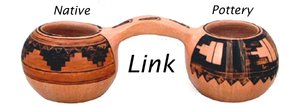
Mata Ortiz Pottery
PF14 Mata Ortiz Gerardo Tena vase. 7 1/2" tall
$840.00
An interesting combination of Mexican icons decorate this 7 1/2” high vase created by well-respected Mata Ortiz potter Gerardo Tena. The subtlety of earth tones with ample negative area makes this a particularly appealing work of pottery art. Gerardo Tena Sandoval learned pottery making from his mother, Sofia Sandoval de Tena, in the 1980s. He is assisted with sanding and polishing by his wife Nora Hernandez de Tena. His reputation as an artist is burnished by his deftness at fine line painting. #PF14
Please Note: For a limited time, our normal fee for packing and shipping will be absorbed by Native-PotteryLink, resulting in FREE SHIPPING to any address within the 48 mainland United States. To ship to other destinations, email to Sanibelart@gmail.com.




